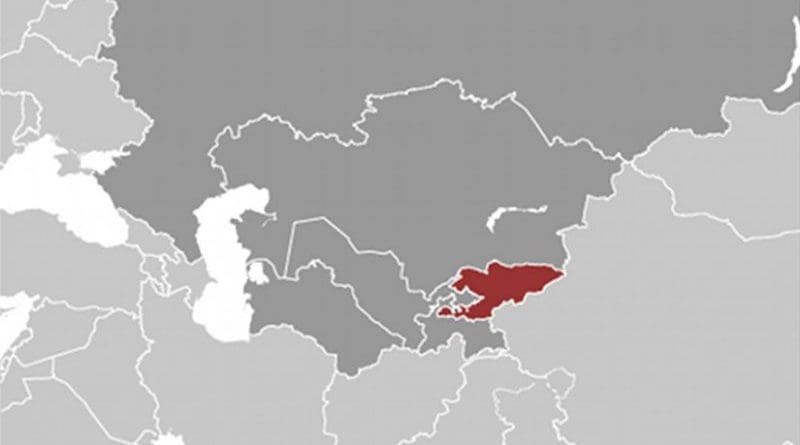Kyrgyzstan Goes Back To Russia For Hydropower Project Help – Analysis
By RFE RL
By Bruce Pannier
(RFE/RL) — It has been nearly two years since Kyrgyzstan’s parliament voted to rescind an agreement with Russia to construct hydropower plants (HPP) in Kyrgyzstan.
In January 2016, when Kyrgyzstan scrapped the agreement for Russia to construct the Kambar-Ata-1 HPP and four smaller HPPs along the Upper Naryn River, then-Kyrgyz Prime Minister Temir Sariev said, “We will think of attracting other investors,” and he asserted, “There are plenty of them.”
It was not until July 2017 that another investor appeared — Czech company Liglass — but that deal quickly fell apart when it became apparent Liglass had neither the money nor the experience to construct the HPPs Kyrgyzstan needed.
At a December 15 meeting of the Russian-Kyrgyz intergovernmental commission in Bishkek, Kyrgyz Deputy Prime Minister Tolkunbek Abdygulov told journalists Kyrgyzstan and Russia might return to the matter of Russian participation in constructing Kyrgyzstan’s HPPs.
And that is apparently the case, as Russian Deputy Prime Minister Arkady Dvorkovich told journalists in Bishkek, “We started certain projects and in the first stage it didn’t work out for us, but that doesn’t mean that the subject is closed.”
He said that if there were markets outside Central Asia for Kyrgyzstan’s electricity exports, “we could resume these projects.”
Dvorkovich and Abdygulov said construction of the HPPs would be a topic for discussion when the intergovernmental commission meets again in 2018.
Russian-Kyrgyz talks on constructing Kambar-Ata-1 and the Upper Naryn cascade project have been going on for many years.
Back in October 2004, when Askar Akaev was Kyrgyz president, Prime Minister Nikolai Tanaev said the Russian company Unified Energy Systems (EES) was interested in the construction of Kambar-Ata-1. Akaev was ousted in a popular revolt in March 2005.
In 2009, President Kurmanbek Bakiev secured a Russian loan of more than $2 billion, $1.7 billion of which was to go toward paying Russian companies EES and RusHydro (aka RosGidro) to build the HPPs.
But Bakiev and his son Maksim allegedly skimmed some money off the initial tranche of $450 million, the Kremlin found out and, in April 2010, Bakiev was ousted in a popular revolt in which Russian soft power reportedly played a prominent role.
In September 2012, then-President Almazbek Atambaev signed a new deal with Russia to build Kambar-Ata-1 and the Upper Naryn cascade project but the economic crisis hit Russia.
EES and RusHydro, neither of which was particularly keen on the Kyrgyz projects, could no longer finance work on the HPPs. That led to Kyrgyzstan’s decision in January 2016 to tear up the deal.
Two years later, Kyrgyz and Russian officials are again talking about building the hydroprojects and new President Soronbai Jeenbekov might be the next Kyrgyz leader to negotiate Russian participation in Kambar-Ata-1 and the cascade network.
Kambar-Ata-1 is a massive project that, when finished, would generate just under 2,000 megawatts (MW) of electricity. But it is estimated it will cost some $3 billion, far beyond Kyrgyzstan’s ability to finance on its own.
The Naryn cascade project calls for constructing four small HPPs: Akbulun with a planned capacity to generate some 87.4 MW of electricity, Naryn HPP-1 with a capacity of 47.7 MW, Naryn-2 with 47.6 MW, and Naryn-3 with 55 MW.
According to a Kyrgyz government presentation for investors in 2014, the total project should cost some $727.65 million.
RFE/RL’s Kyrgyz Service, known locally as Azattyk, interviewed several people who are familiar with the hydroprojects.
Former Kyrgyz Energy Minister Osmonbek Artykbaev and energy expert Rayimbek Mamyrov both suggested that since Russian companies had already started work on the projects it would be better to continue with those Russian companies.
It is worth mentioning that resuming work with the Russian companies would probably also delay resolving the matter of the $37 million Kyrgyzstan owes the Russian companies for work already done at the HPP sites.
And for those hoping this time the projects might actually be realized, it should be noted that now neighboring Uzbekistan does not object to the construction of Kambar-Ata-1 — as it had in the past — when Uzbek President Islam Karimov was alive.
The man who became president after Karimov died, Shavkat Mirziyoev, said during a September visit to Kyrgyzstan that Uzbekistan did not oppose building Kambar-Ata-1 and, in fact, might even join the project. Karimov had warned and threatened both Kyrgyzstan and Tajikistan about building large HPPs that might reduce water needed for Uzbek agriculture.
However, Dvorkovich’s comments about Kyrgyzstan needing to find other markets besides the Central Asian neighbors might prove an obstacle toward attracting EES and RusHydro back to Kyrgyzstan.
There is the plan for the Central Asia-South Asia, or CASA-1000, electricity project that would send electricity from HPPs in Kyrgyzstan and Tajikistan to markets in Afghanistan and Pakistan, but that requires 1,000 MW and might not be enough to interest Russia.
Judging from recent history, one thing seems sure and that is that without Russia’s help, the Kyrgyz HPPs probably will not be built.

